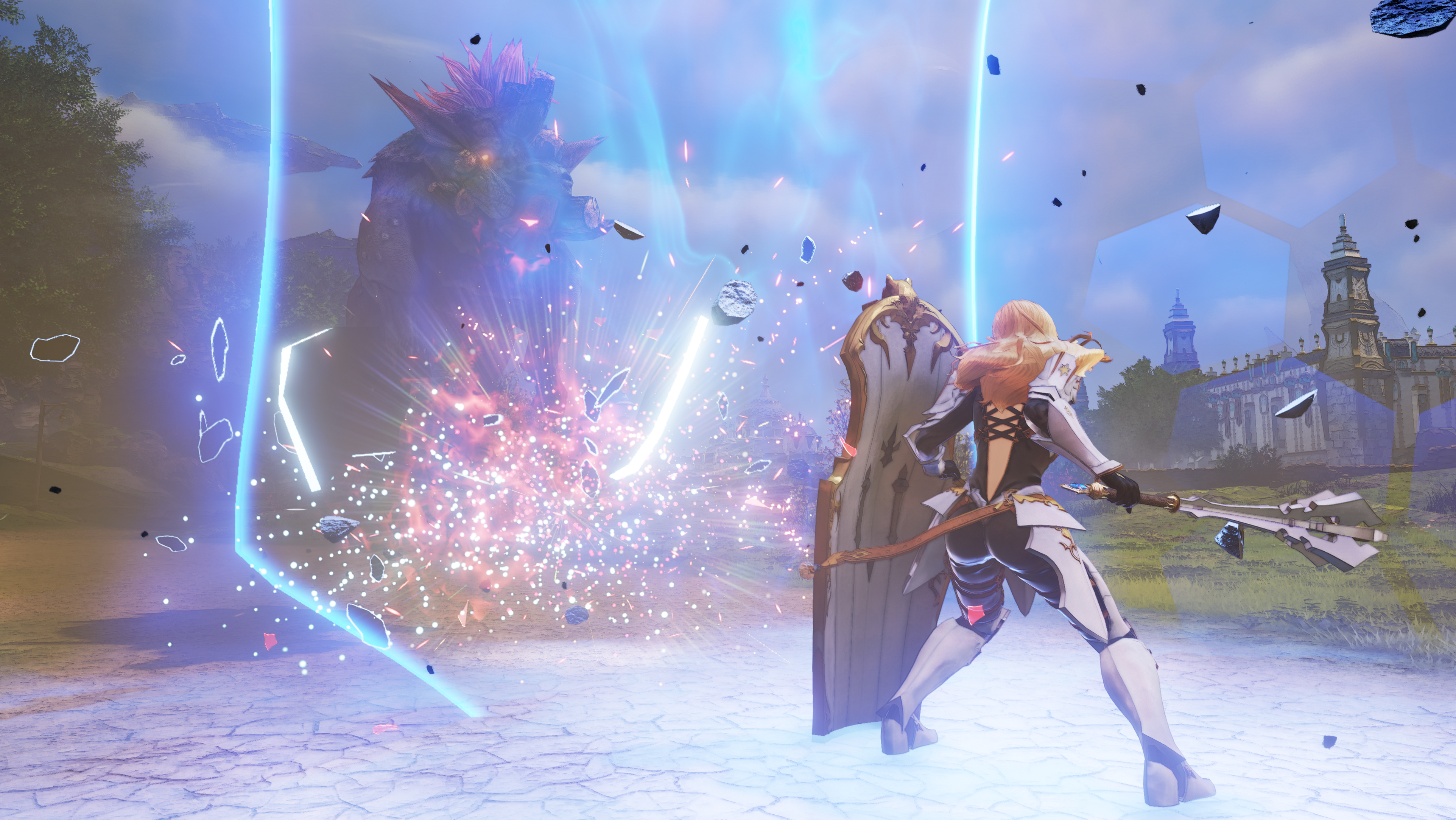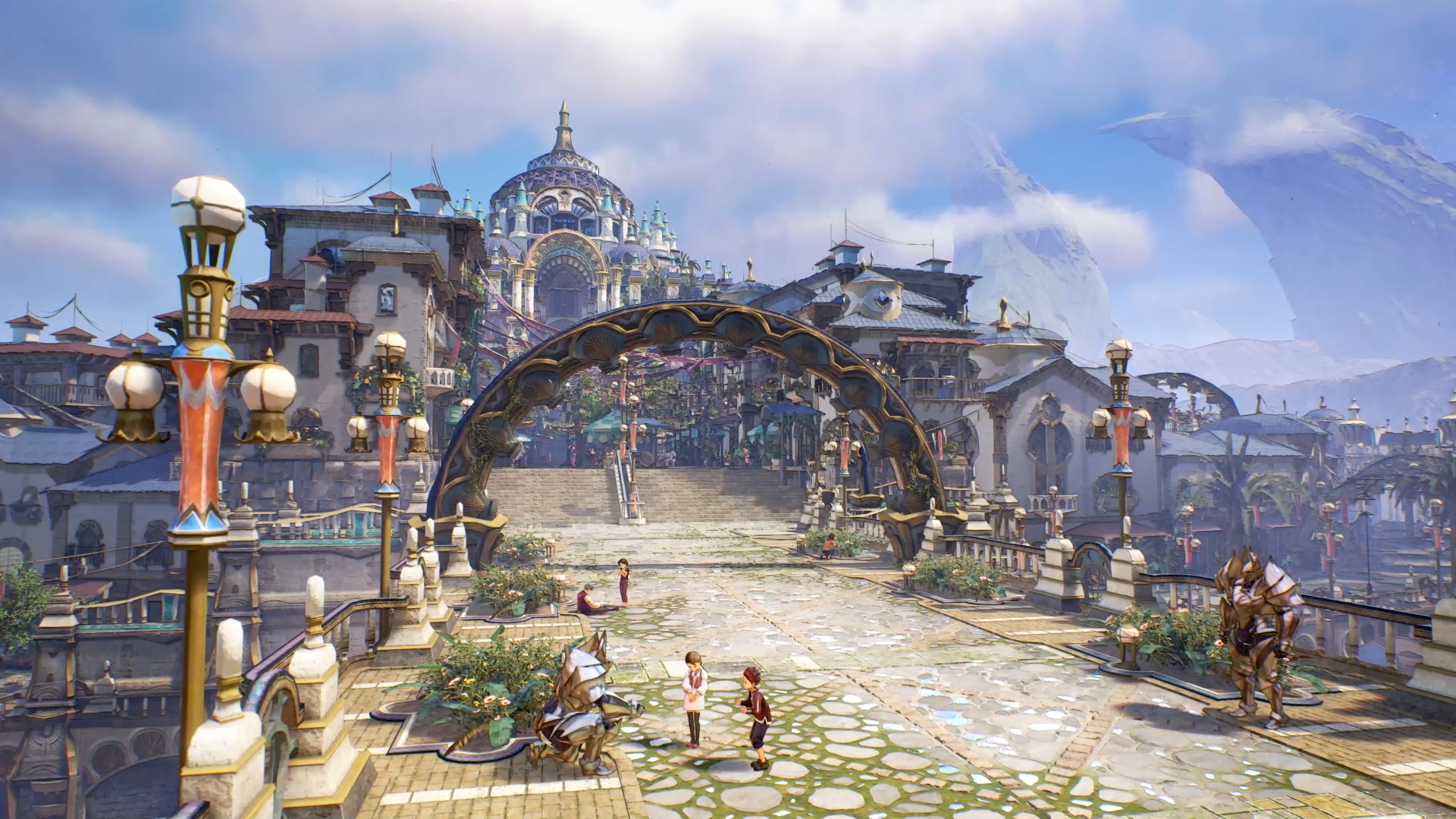Not surprisingly, there’s good and bad about previewing the long-awaited Tales of Arise with only Vesperia under my belt. On one hand, I can compare Arise’s storytelling and mechanics with one of the best games the series has to offer. On the other hand, I can compare Arise’s storytelling and mechanics with one of the best… well, you probably know what I’m getting at, here. Before the gnashing of teeth and tearing of garments begins, I should make it clear what I played of Arise is great - and a much more substantial chunk than what Ed saw back in June. Its battle system adds a lot of cool features and streamlining that makes enemy encounters fast and fun. But Arise also takes itself more seriously than Vesperia. That’s not a sin, and I’m not one to turn down a bit of JRPG angst. Just, journeying with Anime Protag #46 and his Sassy Female Sidekick makes you wish you had a pipe-smoking dog to round things out a little. Maybe I’m not being fair. All Arise can be is itself, and from the handful of hours I played, it has quite a bit to be proud of. There’s certainly more than enough to make me excited about playing the whole game when it arrives in PC next month. You begin your adventure as an amnesiac slave whose face is obscured by a mask. In true JRPG protag fashion, you don’t know the who, what, when, where, or why of “Iron Mask”’s origin: he’s just a dude who doesn’t know anything, least of all why he’s impervious to pain (in my head canon, Iron Mask entertains his fellow slaves on their rare off-hours by hammering his hand to the table while singing ‘Mary Had a Little Lamb’). Iron Mask’s fate quickly becomes entangled with the fate of Shionne, a young woman whose skin automatically goes all electric eel on anyone who tries to touch her. Shionne is a Renan, a member of the race that enslaved the Dahnans (the race Iron Mask belongs to). When circumstances force Iron Mask and Shionne to hit the road together, a lot of snippy conversations and misunderstandings crop up. The Tales series’ “slideshow” cutscenes, which are optional interludes that let characters interact with each other while they’re on the move, gets a big workout within a few hours of starting Arise. All told, Arise is pretty keen on getting you up and moving as soon as possible, which is nice. Iron Mask is thrown into his first fight before long, giving you an early taste of Arise’s unique battle system. “Unique” is a little misleading, since Arise’s battle basics should be familiar to Tales fans. When a battle commences, you’re pulled into a separate battle arena, whereupon you wail on foes using basic attacks combined with skills (“artes”) mapped to different face buttons on the controller. Iron Mask favours a sword (a fiery sword in particular, but saying more might be edging into spoiler territory), while Shionne utilizes a rifle and different kinds of ammo. I let the computer handle most of her battle commands; it’s all I can do to keep Iron Mask’s artes committed to muscle memory without also sinking into the muck of ammo management. Thankfully, Arise’s AI is good. Shionne kicks all kinds of ass in between keeping the party healed. Healing is a little different in Arise versus other Tales games. Cure spells are fueled by a shared pool of “Cure Points” (CP) that are replenished by sleeping at an inn, or by using CP-restoring items like Orange Gels. CP aren’t used exclusively for healing, however. Other skills are powered by the pool, which means you need to be a little picky about how you use your CP, and when. Using a chunk of CP to extinguish a fiery path and access a treasure chest seems like a good idea, but it feels like less of a genius move when your Points are depleted and there are still enemies roaming as far as the eye can see. It sounds like a pain, but Arise makes it worth your while to wander its landscapes in search of restorative items. Its areas feel more open and breezy than Vesperia, which is high praise for Arise given how it starts you off in a scorched realm bereft of vegetation and clean water. The uneven terrain takes you over hills and off cliffs (whee!) as you search for items, treasure chests, and stat-boosting cooking ingredients. I appreciate RPGs that encourage me to wander off and see what I can see. Enemies are plentiful during these excursions, but even if you fail (or refuse) to outrun them, Arise’s snappy combat lets you mop things up quickly. There isn’t even a victory screen; you’re put back on the map as soon as the fight’s over. I’m a bit sad the fights don’t wrap up with anything like Vesperia’s post-battle banter, but you won’t catch me complaining about Arise’s expedience. My initial impressions of Arise are very good, but they’re also from the viewpoint of a newcomer to the Tales series. If you’re a veteran fan, it won’t do you any good to cling to my rags and wail for a more specific impression, such as how does it compare to 2016’s Tales of Beseria. The truth is, I don’t know. (You can still cling to my rags, if you want; I’m just saying it won’t do you any good.) But from my viewpoint as a spankin’ new Tales fan who’s gung-ho on JRPGs, I’m stoked for Tales of Arise’s September 10th release. Yes, the somewhat generic leads could stand to loosen up a little, but here’s a tip: accessorizing Iron Mask with bunny ears and a tail makes listening to his painted rants a lot more interesting.


